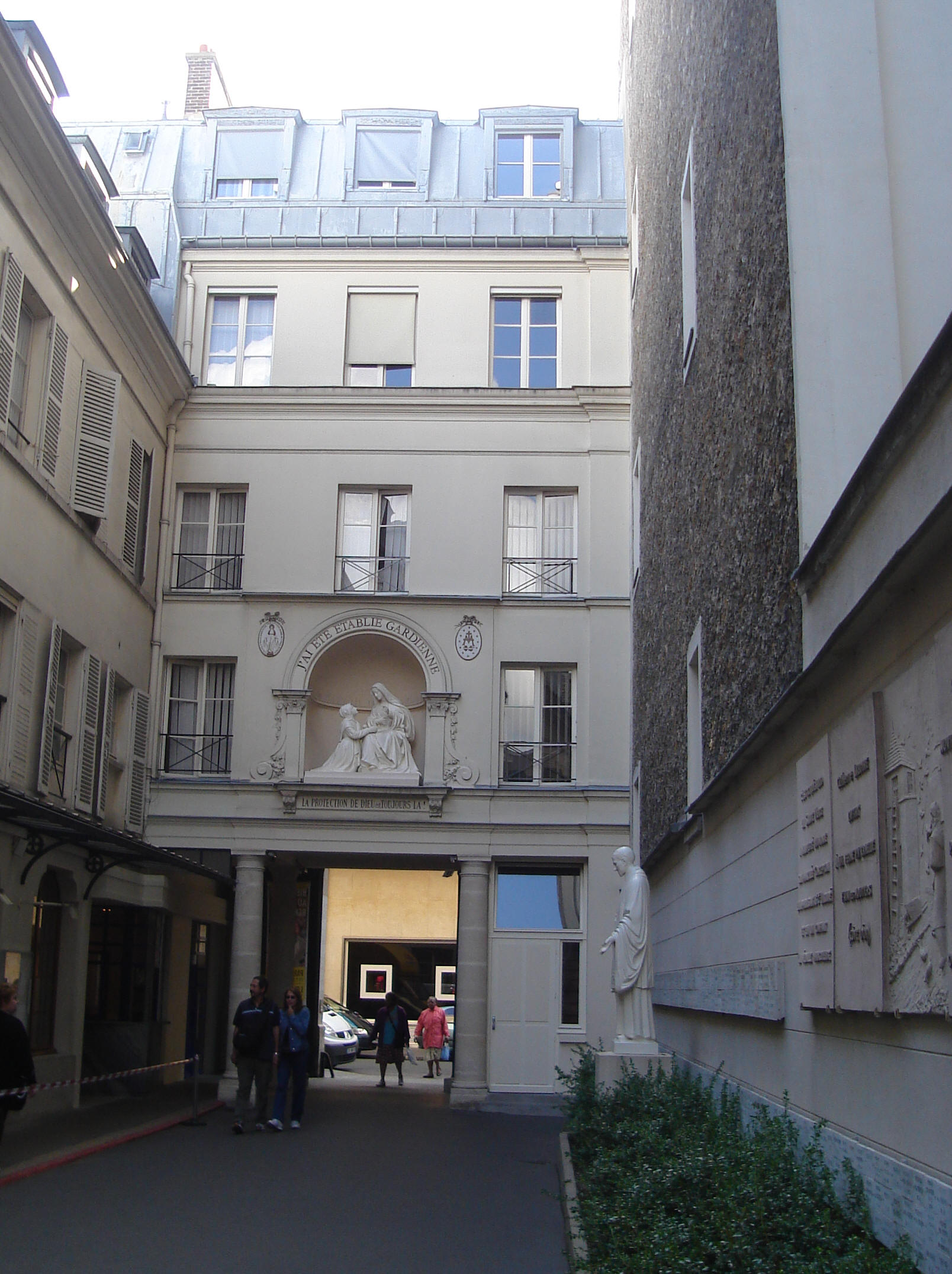
Part Seven: A Miraculous Medal and a Dire Warning
Catherine Laboure was born on May 2, 1806. She was the eighth of ten children who survived. Her mother had seventeen pregnancies and she died in 1815. Pierre Laboure was a simple man and could not raise the family alone. Arrangements were made for Catherine, now eight years old, and her seven year old sister, Tonine, to live with an aunt for two years. Then Catherine was returned to the family to care for her little brother, to oversee a dovecote in which her father raised as many as six hundred doves, to clean, to cook and to wash. Catherine asked her father for permission to join the Daughters of Charity but he would have none of it. She was too valuable at home.
At twelve years old Catherine made her First Communion. It was after this event that Catherine had her first mystical experienced. She reported a dream in which she was attending Mass. The priest was elderly and turned to her and said “Do not forget the God has plans for you.” The image stayed with her. Years later while visiting the Daughter of Charity house at Chatillon-sur-Seine she saw a picture of that priest in her dream. She asked who this was and a surprised sister replied it was Saint Vincent de Paul, of course.
At eighteen Pierre Laboure sent Catherine to finishing school but she quit shortly after as her rural mannerisms had been the butt of many jokes. Again she spoke of a vocation to her father. Again he refused.
Instead Catherine was sent to Paris to help her brother Charles run a restaurant there. Her housekeeping skills were appreciated but made redundant when Charles remarried in 1829. She returned to her father and again petitioned to join a convent. Little French girls have a way with their fathers. Pierre’s defenses were exhausted and he relented. In January, 1830 Catherine Laboure entered the Daughters of Charity postulancy.
On April 21, 1830 Catherine, now a novice, witnessed the translation of the relics of Saint Vincent de Paul from the Notre Dame Cathedral to the residence at Rue de Sevre. His bones had been hidden during the French Revolution for fear of sacrilege. When it was safe, they hade been placed at the great Paris cathedral, but in 1830 the Congregation of the Mission, his Order, felt the relics belonged with them. The ceremony deeply impressed Catherine and sparked her second mystical experience.
That evening she had a vision of a heart which appeared white and turned red and then turned black. She interpreted this to be the heart of Saint Vincent and believe the white stood for peace, red for love and black as an ominous sign of hard times to come. When she told of these visions to her spiritual director he advised her not to think of such things.
Catherine went about the daily
routine of a novice throughout the spring and summer of 1830. Then around 11:30
PM on July 18th she was awaken by yet another mystical encounter. A
child’s voice called out to her, “Sister, Sister, Sister.” She awoke and saw a
little child dressed in white standing by her bed. He told her to come to the
chapel, that the Blessed Virgin was waiting for her. She dressed quickly and
went with the child. She remembered in a memento, “He shone brightly and
illuminated the path we were taking.”
The chapel glowed with lit candles. A beautiful woman was sitting in Mother Superior’s chair. Catherine reported knelling at her feet but doubting the vision, doubting that it was really the Blessed Virgin Mary. The child’s voice came from her side, now husky like a man’s voice, assuring the novice that this was Mary.
“Then I spent the greatest moment of my life,” Catherine recalled. Mary told her of trials and hardships ahead and pointed to the altar. “That it was here I was to open my heart, there I would receive all the consolation I needed,” Catherine reported.
Suddenly the vision was over. She conducted herself unseen back to her bed and as she rested upon the bed, pondering the meaning of this experience, she heard the convent clock strike two bells.
Two days later she reported the vision to Father Jean-Marie Aladel. He was again skeptical. She reported that Mary told her, “The times are very evil. Misfortunes afflict France … The moment will come when the danger will be great. People will believe that all is lost.”
The opposite seemed to be true. France was firmly in control of the absolutist king Charles X. What could happen? Yet six days later, when the king issued his Four Ordinances, all Paris erupted. Riots followed for three days. Barricades went up. The king fled. For days chaos reigned in the streets. Father Aladel became a believer.
Catherine Laboure experienced one
more Marian visit. On November 27, 1830, during the Grand Silence of the
novitiate night, she became aware of Mary standing before her. The Virgin wore
a silk robe and a long white veil which covered her hair. She appeared to be
standing on a half-globe, her eyes lowered and her hands were outstretched
before her holding a globe. The whole scene was enveloped in an oval with
lettering around the edges. “O Marie, consue sans peche, priez pour nous qui
avaons recours a vous.” Oh Mary, conceived without sin, pray for us who have
recourse to you.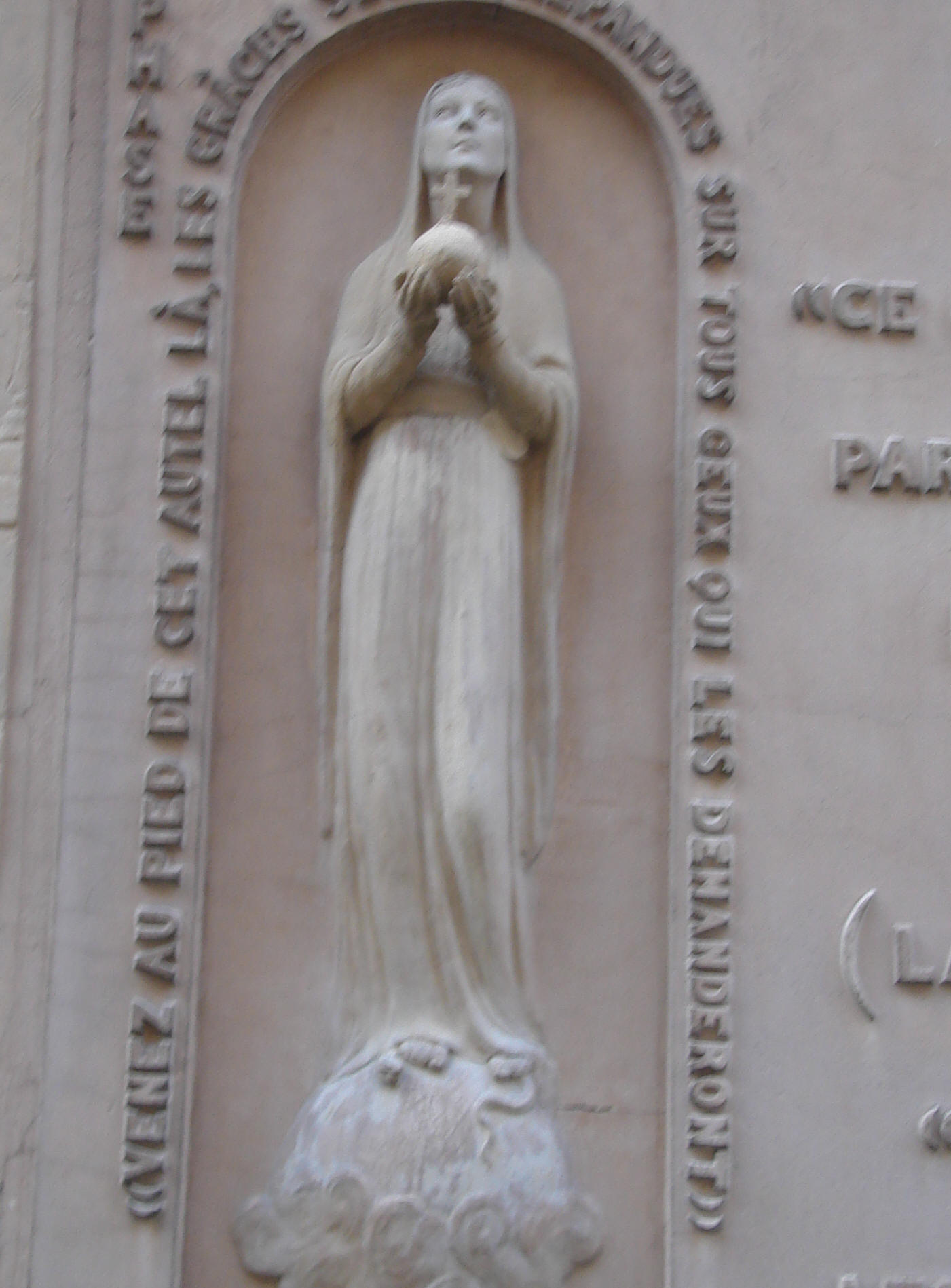

This was 1830. Many Catholics had believed over the centuries that Mary had been conceived without Original Sin upon her soul, the Immaculate Conception, but it was not an article of Faith. Not until 1854, twenty-four years, later would Pope Pius IX speak infallibly of this doctrine. Not until 1856 would this doctrine be confirmed in another vision, at Lourdes, when the Virgin identified herself to another young French peasant girl, saying “I am the Immaculate Conception.”
Catherine Laboure took in the vision if not its theological meaning. The oval rotated and the novice saw the back side. There stood a large M with a small cross above it. Below the M were two hearts which Catherine identified as that of Jesus, bearing a crown of thorns, and that of Mary, pierced by a sword. She promptly told Father Aladel who pondered the meaning.
In February, 1831 Sister Catherine Laboure received her first assignment as a Daughter of Charity. She became a cook for a residence for the elderly, a hospice of some fifty residents, a chaplain and a community of seven sisters. A year later when the Cholera struck Paris one of the sisters died.
Father Aladel had not forgotten the image of the November 27th vision. He commissioned a medal to be struck with the Virgin as described by Catherine on one side and the M, cross and hearts on the other. Each sister was given a medal, but no explanation was given regarding its source. Catherine received hers in silence. No further deaths occurred among the community of sisters. Indeed, there were reports of healings and cures and demand for the medal spread. Within two years, over a half million medals were minted, but the source was never revealed.
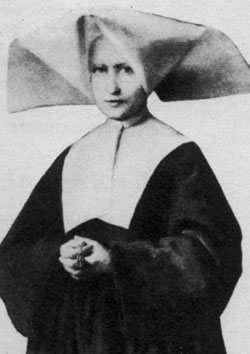
Sister Catherine was placed in charge of the hospice as her housekeeping skills, hone by years of work at home and in her brother’s restaurant, proved to be valuable. She extended the hospice to include a small farm with chickens, rabbits, pigeons and cows. She would have been perfectly at peace living out her simple life, but her privacy unraveled from time to time.
Father Aladel wanted to commission a statue based on the November 27th vision. Attention to detail brought Sister Catherine back to those memories. In 1842, a prominent Jewish banker, Alphonses Ratisborne, was convinced to wear the medal. He put it on scoffing but immediately had a change of heart and converted to Catholicism. He later was ordained to the priesthood but made irresistible efforts to meet the secretive nun.
Years passed. Catherine was in Paris during the uprising of 1848. She and the other Daughters cared for the wounded on both sides. A renewed Cholera epidemic returned and required their attention. An orphanage was opened at the hospice and half the community cared for the children while the other half continued assisting the elderly.
On December 8, 1854 Pope Pius IX pronounced the doctrine of the Immaculate Conception. By that time over one hundred million medals declaring Mary “conceived without sin,” had been minted. In 1856 word spread of visions at Lourdes and that the women in the vision had declared herself The Immaculate Conception. Sister Catherine told the Vincentian priest, Father Hamard, “This is the same woman.”
By now many in the community of the Daughters of Charity suspected Catherine to be the seer of 1830. One novice told another, “The Sister who saw the Blessed Virgin is now taking care of cows in a house somewhere in Paris. But not everyone was convinced. One novice who served with Catherine at Enghien reported, “I told myself, it could not be her. I did not find her mystical enough.” Even Catherine’s niece who joined the Daughters of Charity doubled that her aunt was the seer.
By November, 1876 Catherine had become very ill. She predicted that she would not see 1877. In the last hours of life she confided to her superior, Sister Jeanne Dufes all that had happened. When she died at 7:00 PM on December 31, 1876 her face shone radiant. I surprised the sisters who were in attendance but Sister Dufes explained to them, “Yes, it is true that she is the one who saw the Blessed Virgin.”
In the first days of the new year of 1877, Catherine Laboure was buried at Reuilly. Later the body was disinterred to be removed to the house at Rue de Bac. The body was perfectly preserved, as on the day of her death. A medical examination found that even her eyes remained full and blue. Her body remains at Rue de Bac in a glass coffin where nearly a thousand pilgrims visit each day. In 1947 Catherine Laboure was canonized by Pope Pius XII who used the occasion to honor Our Lady of the Miraculous Medal.
In 1846 Catherine Laboure was forty years old and anonymous when another apparition took place in France. It was very different, with a very different outcome.
It was a Saturday, September 19th
and two youngsters were tending cows near Corps, a town some twenty-five miles
from Grenoble. Melanie Mathieu, aged fourteen, was assisted by eleven year old
Maximin Giraud. They had conducted the cows to a mountain slope near the tiny
village of La Salette.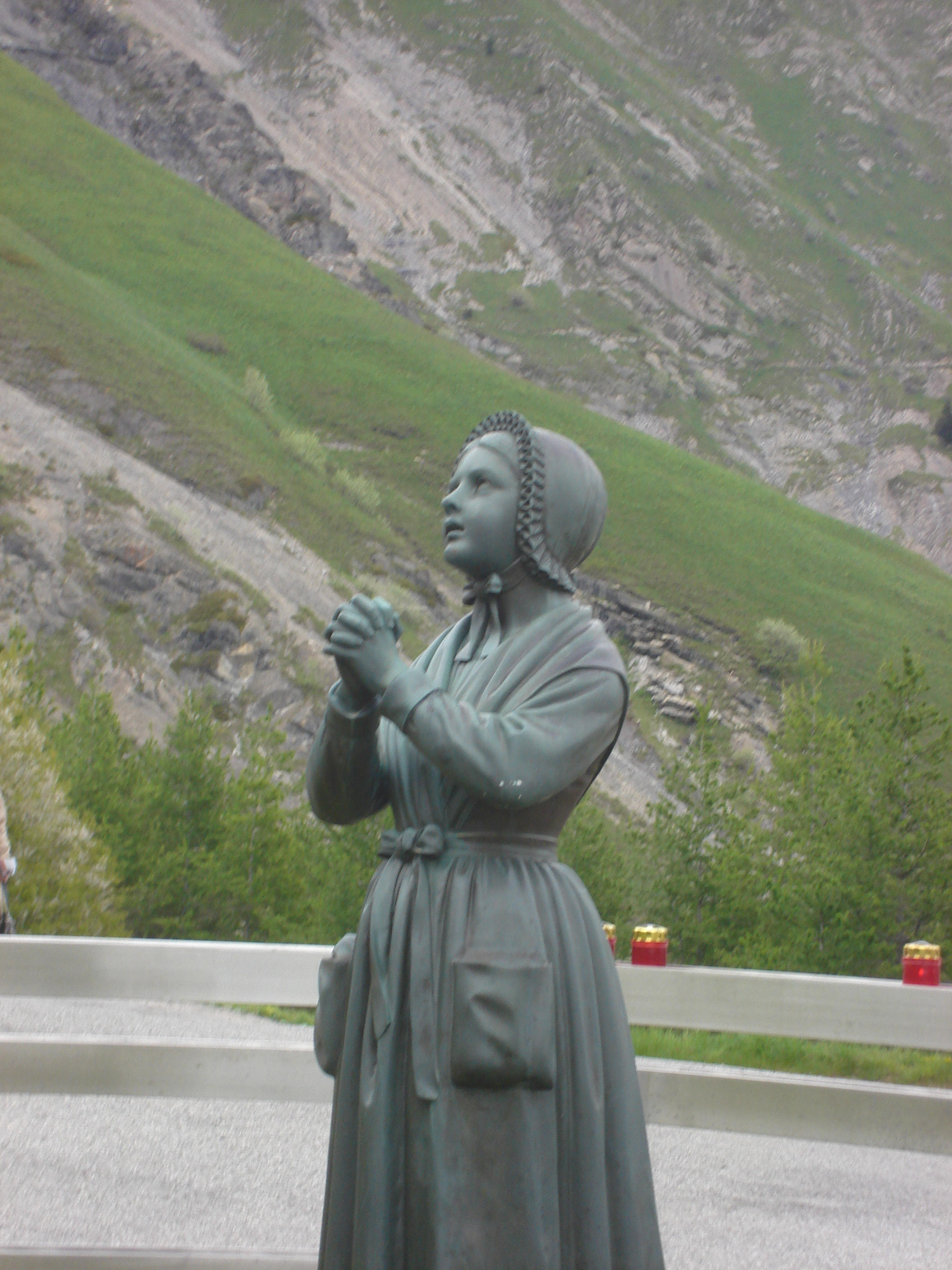
A woman appeared from nowhere and
spoke to them in French. But the children spoke only the local patois dialect
and sensing this, the woman began to speak in their own tongue. The children
were mesmerized and thought she was a saint. One aura surrounded her body and
another seemed to radiate out from her. She wore an unfamiliar crucifix, a
hammer attached to one arm and a tongs attached to the other. She was crying.
As the children came closer the Holy Virgin, as they called her, told them of
upcoming harvest failures. The potato crop would fail within three months. She
told them to warn the people not to plant the corn; the seed was bad. They were
not to feed it to the cattle; it would bloat them.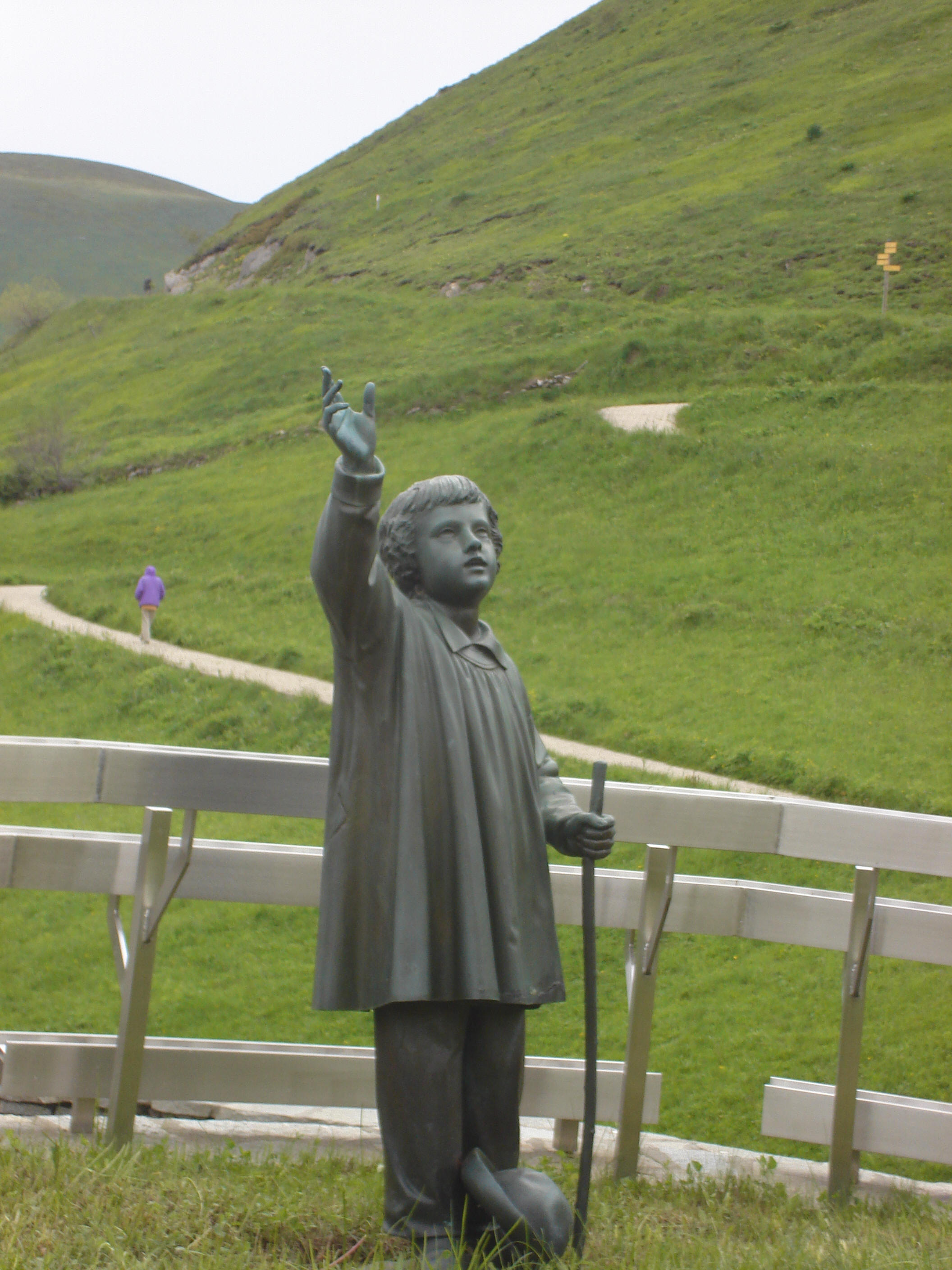
They reported her saying, “Before the famine comes, children under the age of seven will begin to tremble and will die in the arms of those who hold them. The others will do penance through hunger. The nuts will be bad; the grapes will become rotten.”
Indeed, a Cholera epidemic was
raging in France at the time, striking especially children and the elderly.
Thousands died. The potato crop failed in December 1846 and would continue to
fail for two years after that. The corn was in fact bad and when fed to cattle,
bloated them so that thousands had to be slaughtered. The walnut crop failed in
the winter of 1846-47 and within a few years a terrible blight called Phylloxera
was brought to France from the United States and ravaged the nation’s vineyards.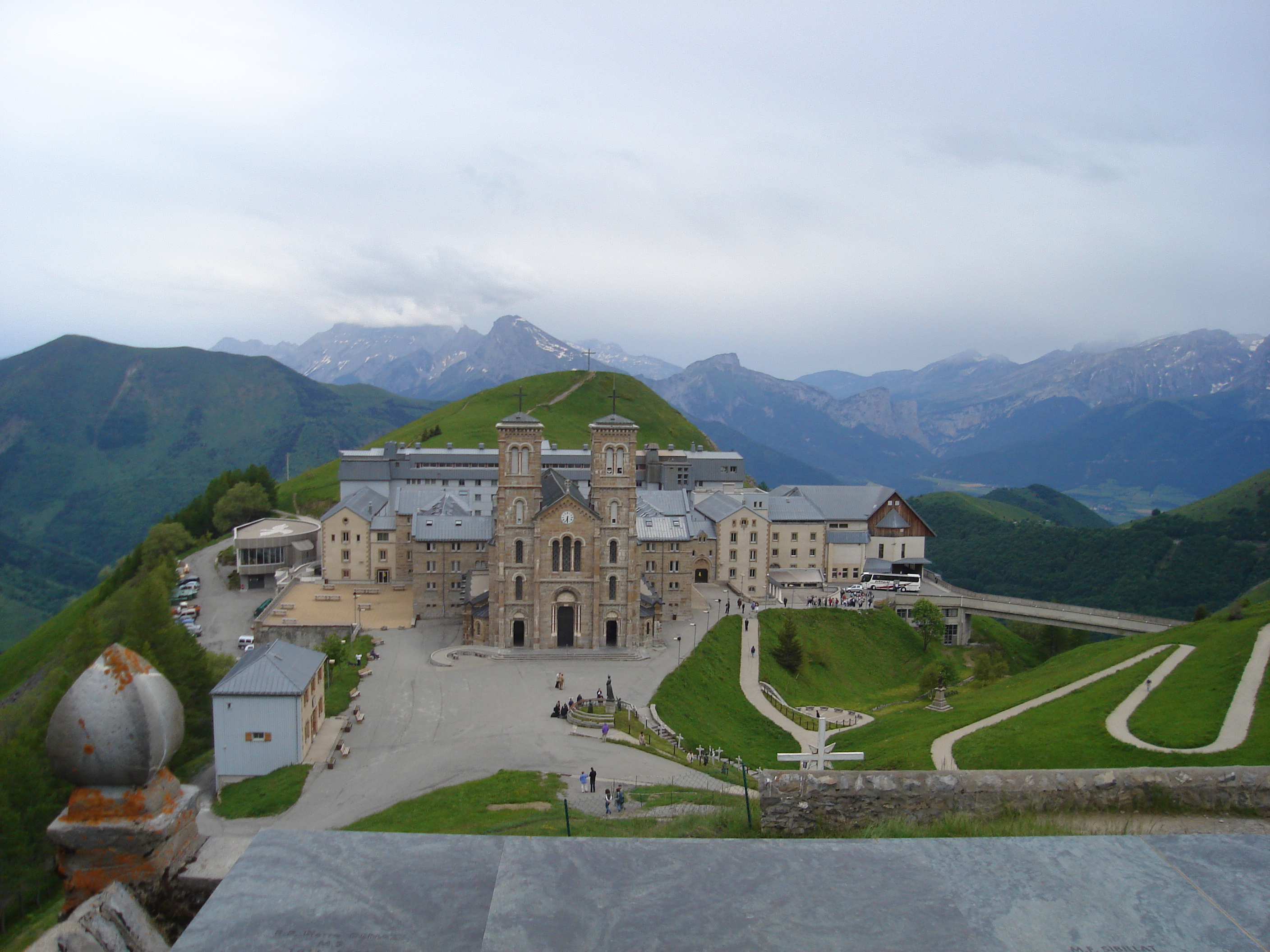
As if this were not enough, the weeping woman said of the clergy of France, “by their wicked lives, by their irreverence and their impiety in the celebration of the holy mysteries, by their love of money, their love of honors and pleasures, the priests have become cesspools of impurity. Yes, the priests are asking for vengeance, and vengeance is hanging over their heads.”
Then, to these astonished peasant children she gave a warning for the pope. “May the curate of my Son, Pope Pius IX, never leave Rome again after 1859; … I will be at his side. May he be on his guard against Napoleon: he is two-faced, and when he wishes to make himself pope as well as emperor, God will soon draw back from him.”
For even an educated person, this last warning would have made no sense. Pope Pius IX had been elected only on July 21 of that year, a mere fifty-nine days before the apparition. Could the children at Corps even had known of these events? And what of Napoleon? The Emperor Napoleon had been defeated at Waterloo in 1814, had been exiled to Saint Helena and died there in May 1821. His body was brought back to Paris in 1840, six years before the apocalypse of La Salette, but he was safely and permanently interred in a vault in the bowels of Les Invalides.
Regardless, this enigma did not deter the devout. Within a year twenty-three cures were attributed to the Lady of La Salette, though most were unconfirmed. Thousands of pilgrims made their way to the rugged place. The Sisters of Providence took the two seers, Melanie and Maximin, under their wing at their school in Corps.
Two investigations were launched by Bishop de Bruillard and in 1851 Pope Pius IX became aware of the vision and its message as a sealed document was delivered to the Vatican containing a transcript of the seers’ message. Cardinal Lambruschini initiated his own investigation and in 1852 Bishop de Bruillard announced “nothing less than an apparition of the Blessed Virgin has been seen by two herders on September 19, 1846.”
In May, 1852 the bishop then lead
a procession of ten thousand people to the site of the apparition and laid a
cornerstone for a basilica to Our Lady of La Salette.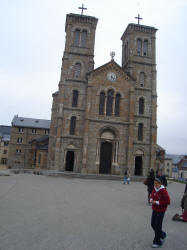
The mystery of the Napoleon warning was solved in 1848 when Louis-Napoleon, nephew of the emperor, appeared on the political scene. He was promptly elected president of France but overthrew his own government in 1852, declaring himself Emperor Napoleon III. With the Revolutions of 1848 and 1849, Pope Pius IX could not leave Rome where he was protected by troops sent from France. Indeed, after they were withdrawn in 1870 due to war with Prussia, the pope lost even the city of Rome and was, for the rest of his life, a prisoner in the Vatican.
The fate of the two seers was unfortunate. The boy Maximin grew up and tried to exploit his notoriety. He even produced and marketed a liquor he named “Salette.” He died of alcoholism at the age of forty.
Melanie became eccentric and tried to enter various convents throughout her life. She was bitter and obnoxious and also tried to exploit the fame of the apparition. She died in 1904 serving as a sacristan. He referred to herself as “Sister Mary of the Cross, Victim of Jesus.” It was a sarcastic jab at the Church which she believed victimized her throughout her life.
The lives of these two seers was far different from the secretive seer Catherine Laboure or the seer of Lourdes, Bernadette Soubirous. Both shunned fame, embraced lives of simplicity and virtue and gained sainthood.